How to Identify and Cook Honey Mushrooms
December 27, 2010 | Updated January 15, 2024
As an Amazon Associate I earn from qualifying purchases.
Honey mushroom is a generic term for a wide complex of wild mushrooms in the Armillaria family, usually A. mellea. Yes, honey mushrooms are edible, with a few caveats. Here’s how to identify, harvest, cook and preserve them.
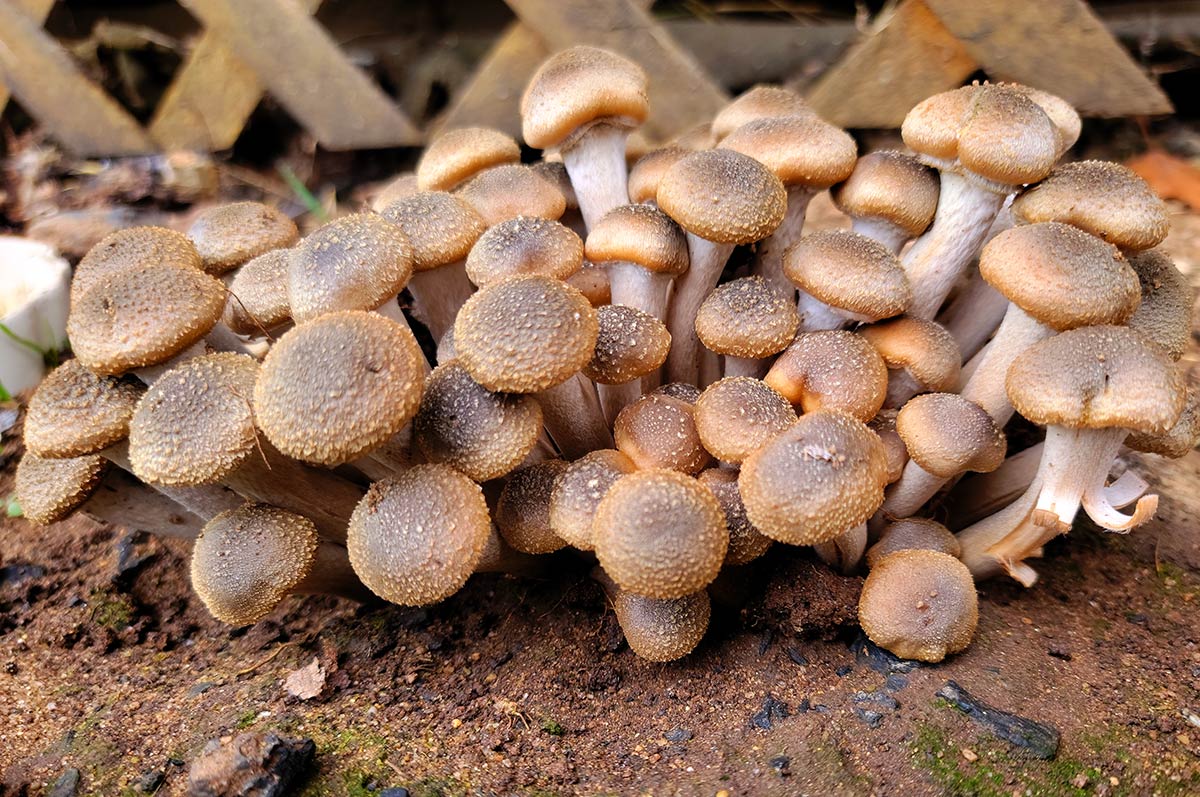
See these? These are primo honey mushrooms. Regardless of species, you want to pick a honey mushroom young, like real young. This patch is in my yard, and it emerged maybe four or five days before I took this picture.
Timing matters with honey mushrooms, although they are still kinda-sorta edible when they get old. More on that in a moment.
Habitat and Range
Honey mushrooms are a circumboreal species, usually found in temperate places, meaning not the tropics. Imagine a ring starting in the boreal forest and extending down into the American South, Europe, and Russia, as well as China.
Mostly you will find them north of a line running from about Fresno, California to about Charlotte, North Carolina, but a few species, like the ringless honey, can be found as far south as Florida.
They are a decomposing mushroom that eats wood and causes “white rot.” If you have it in your yard, as I do, good luck getting rid of it. Killing a honey mushroom is notoriously difficult.
Look at the base of trees, around stumps, and around piles of fallen logs. Honey mushrooms are always in a cluster.
You will find honey mushrooms when the weather is cool and damp. I’ve gathered them in Virginia as early as September, and as late as January here in Sacramento. I’ve never seen them in spring.
Identifying a Honey Mushroom
You want to be very sure about what variety of mushroom you have before you go eating it. This is always good policy, but there are a few poisonous mushrooms that bear a passing resemblance to a honey mushroom, notably the sulfur tuft and the various pholiota species.
You use a “key” to identify a honey mushroom. I’ll walk you through it.
I highly recommend buying a book like David Arora’s Mushrooms Demystified, which contains long “keys” consisting of scores of “if-then” statements. For example, if the mushroom has a ring on the stalk, go to No. 12. If not, go to No. 18, and so on. You start with guidebook pictures to get you in the ballpark, then move on to the more detailed key to confirm your guess.
This is absolutely necessary when you are trying to see if a mushroom that is new to you will taste good, be boring — or will dissolve your liver. Beware of the mycological siren song that traps many a mushroom hunter: It is a common — and potentially lethal — mistake to make a square peg fit into a round hole, mentally downplaying one aspect of a mushroom so it can fit into the edible hole you want it to be in. Dangerous.
Let’s take a closer look at the honey mushroom.
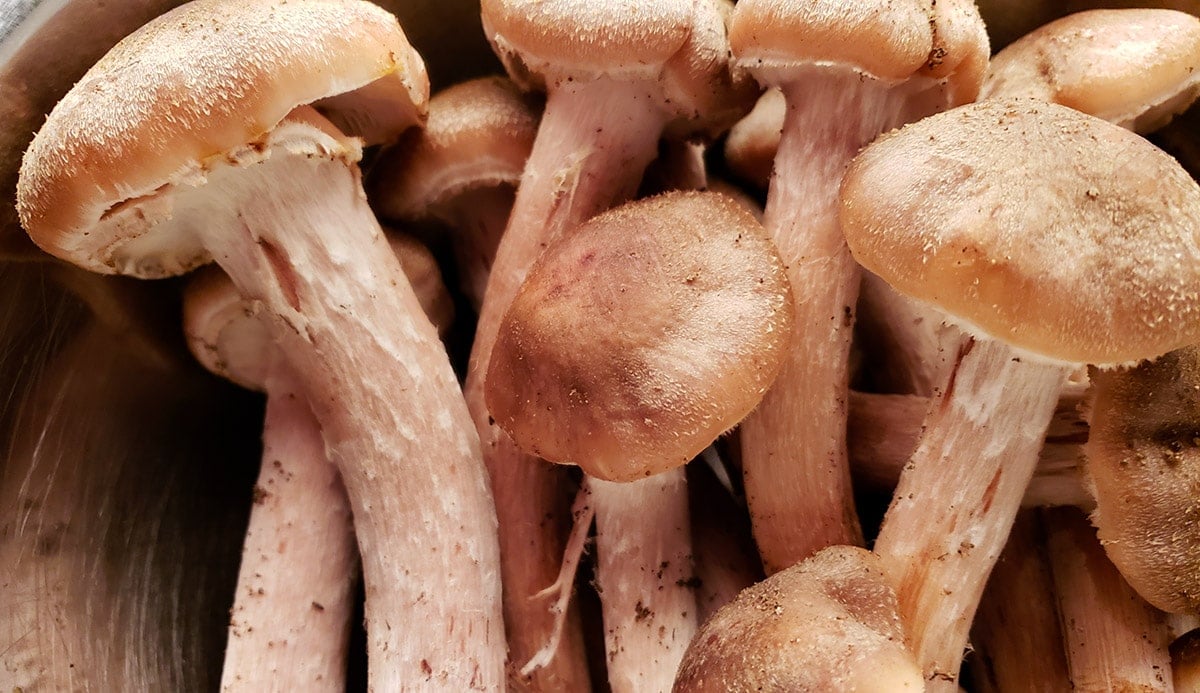
What makes a honey mushroom a honey mushroom? Lots of things, but there are two important markers to look for beyond three easy ones: where it’s growing, is it in a cluster and does it have the ring around the stalk? (Although there is a ringless honey mushroom, A. tabascens) The first important marker is whether the cap has five o’clock shadow:
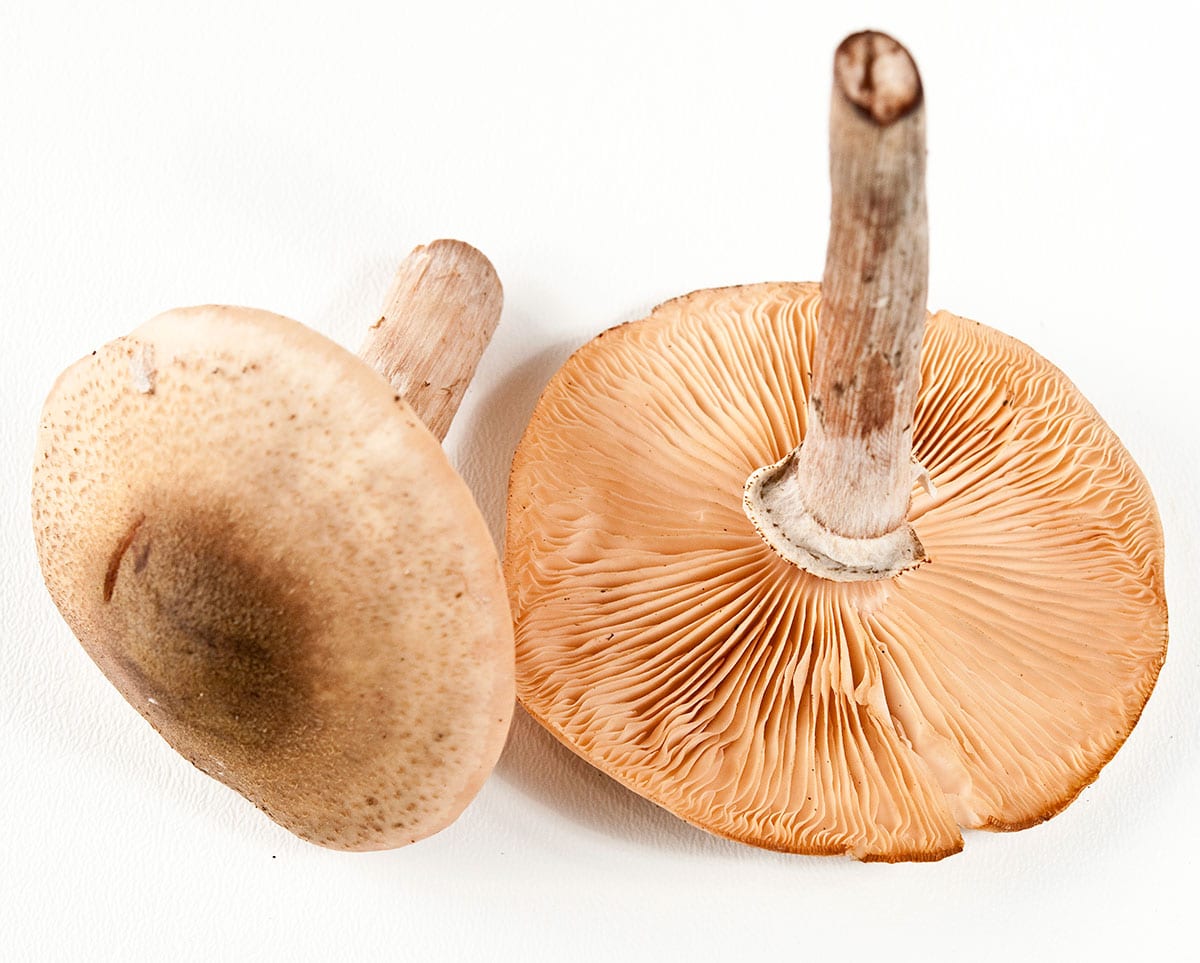
These little hairs, or speckly fuzzy things on the cap are a hallmark of a honey mushroom — which, incidentally, is so named for the range of colors it can have on the cap rather than its flavor. Look for these markings. You can see them even in the really young honey mushrooms in the top picture as pimply dots.
A second tell-tale marker is the mushroom’s gills: Honey mushroom gills are decurrent, meaning they run down the bottom of the cap and onto the top of the stalk, down to the mushroom’s faint ring.
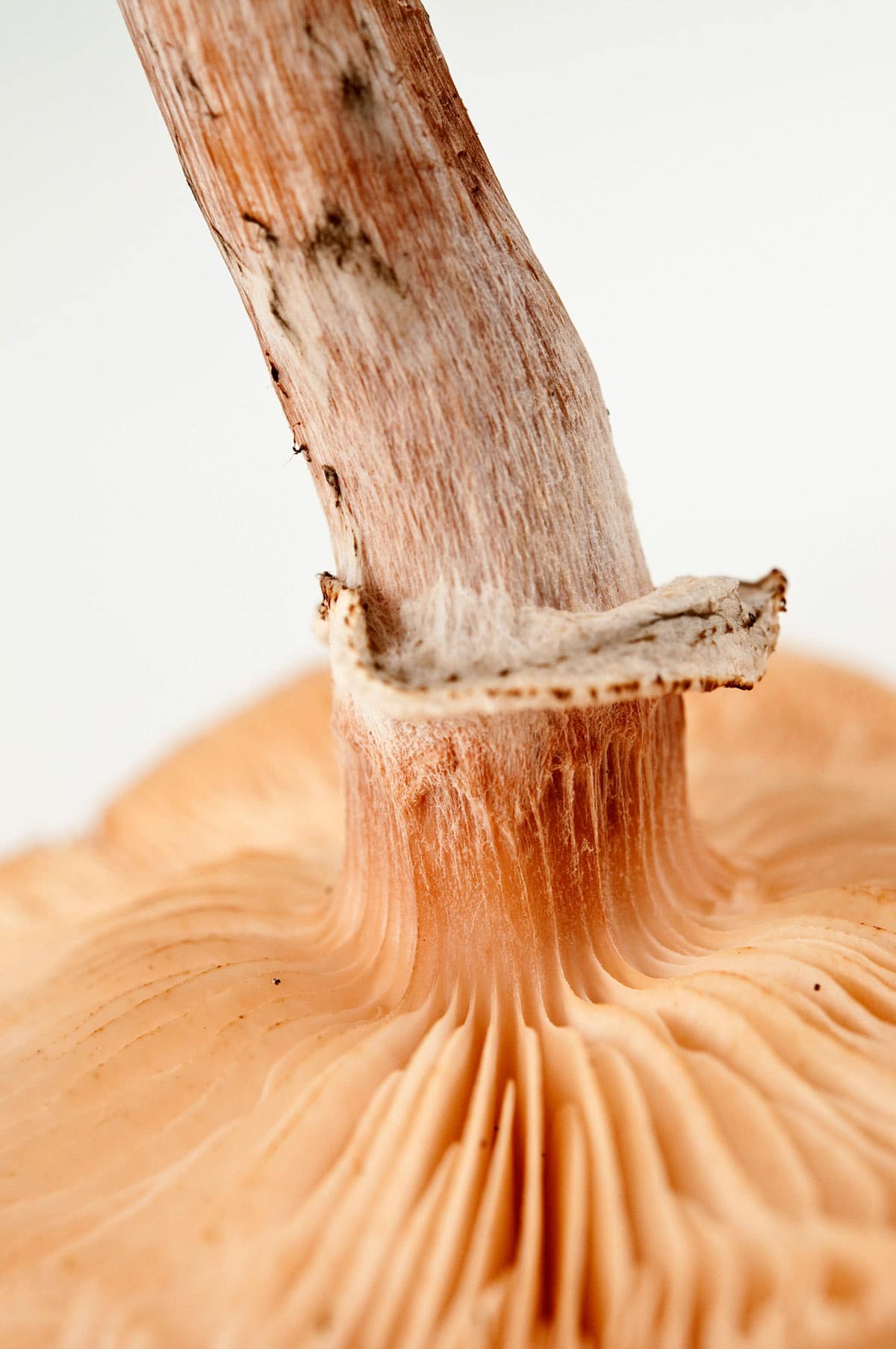
A final test is a spore print. It’s like a fingerprint for a mushroom, and will often confirm your best guesses after keying the thing out. To make a spore print, you slice off the stem of a mushroom and lay the cap, gills down, on paper. Ideally, you do a couple of prints: One on white paper, another on a darker paper. This is because a lot of mushrooms have white spores, which won’t show up on a piece of white paper.
Honey mushrooms have white spores.
Harvesting Honeys
Unless they are those pretty little buttons, you will want to collect only the caps of honey mushrooms. As the mushroom ages, the stalks get fibrous and not fun to eat — although they make a perfectly fine mushroom stock. Try to keep dirt out of the gills because they are a pain to clean.
Once gathered, set your honey mushrooms on paper towels in a lidded container in the fridge. They will keep this way for a week or so.
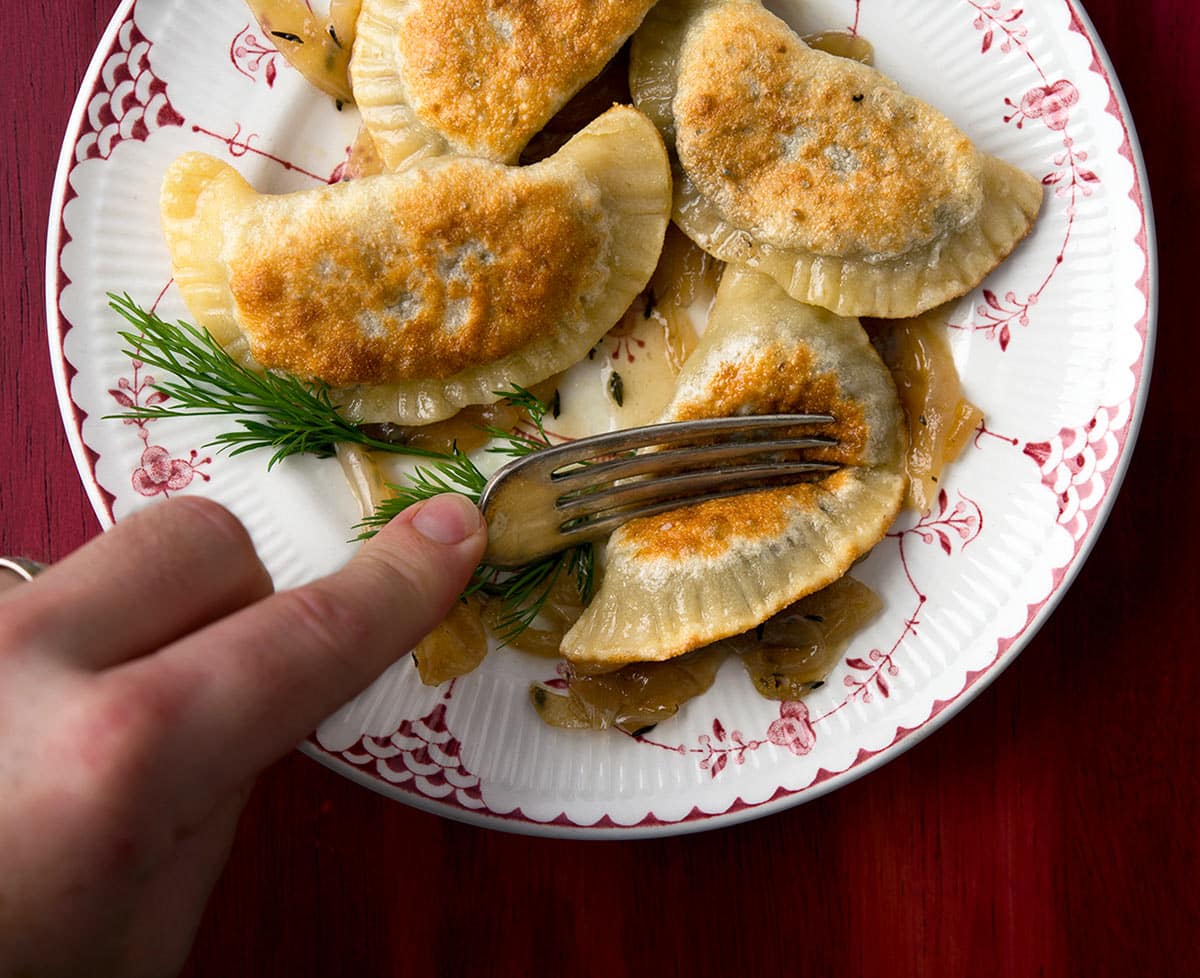
Cooking Honey Mushrooms
Before I start with this one, I need to tell you why you will never see a honey mushroom at the supermarket: It’s because a certain, measurable percentage of people who eat them, get a stomach upset. It’s not so much a toxin as it is an inability to digest them. It presents as a stomach ache and unhappy innards for a day or so.
So the first time you eat honey mushrooms, go easy. And wait a day.
Second caveat: Honey mushrooms must be thoroughly cooked. No quick sauté. Honeys need to be braised, stewed, or roasted for more than 1o minutes or so, and I always cook mine more than 30 minutes. An hour is better.
Third caveat: A honey mushroom is the mycological equivalent of okra, or nopales. Yeah I’m talking about slime. Honeys are not nearly as slimy as okra or nopales, but they are. This is why they are not terribly loved among most mushroom hunters: They are not a “fry it in butter and eat” sort of mushroom.
But this thickening effect is perfect when the mushrooms are part of a filling, or a stew.
Other good recipes for honey mushrooms include:
- Nothing beats using honeys as a filling for mushroom pierogi.
- Filling for bierocks, bready rolls stuffed with sauerkraut and other good things.
- Polish style salted and fermented mushrooms.
- A wild mushroom ragu or pasta sauce.
- You can mince the honey mushrooms and use them in place of morels in this sauce for venison or beef.
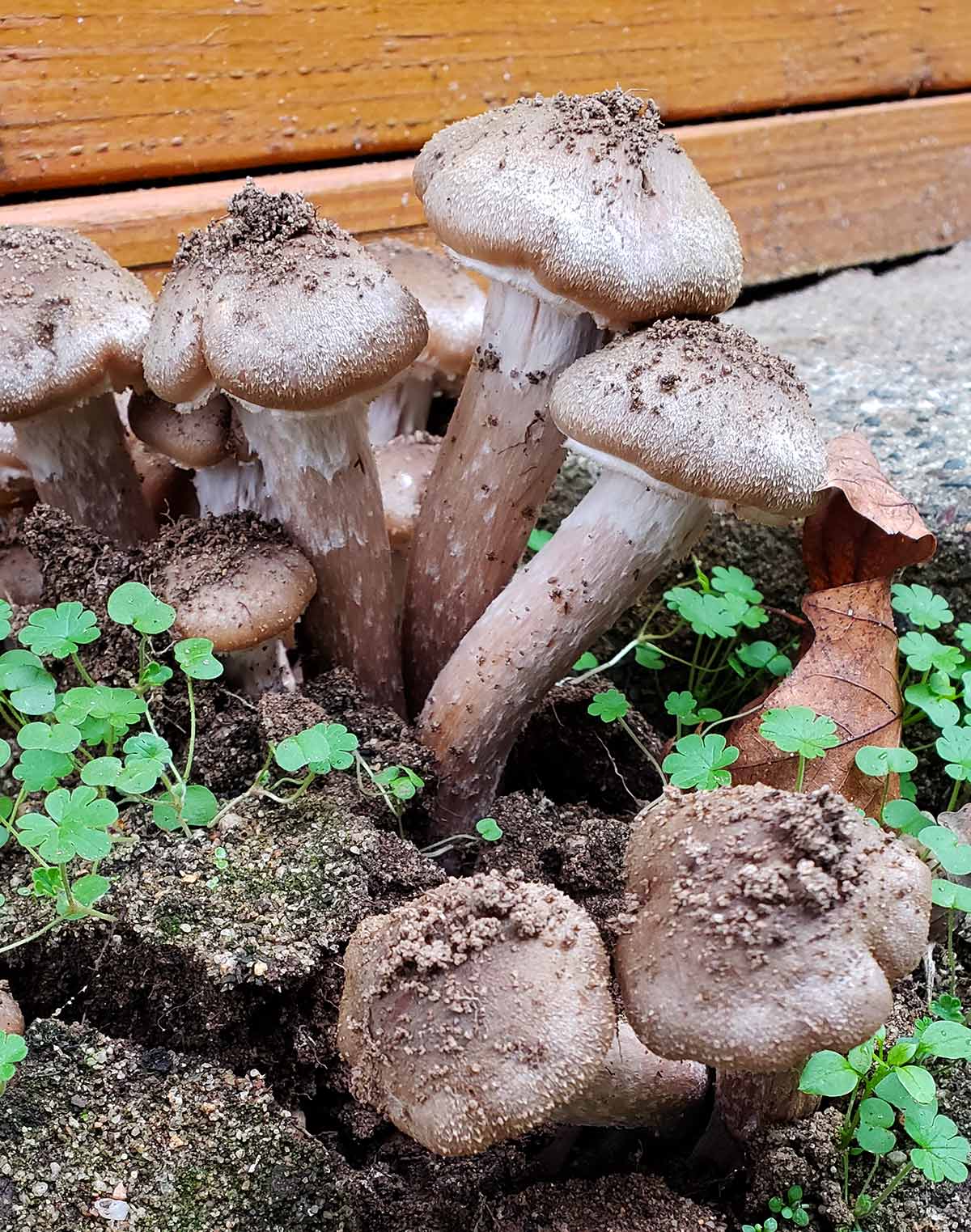
Preserving
I’ve tried pickling honey mushrooms, and, well, it was a slime fest. Not my thing. You absolutely can dehydrate them, and it’s a great way to preserve them for winter stews. That’s my go-to method. Just dehydrate at low temperature until the mushrooms get brittle and papery. It takes about 8 hours or so.
Another method is to cook, then freeze. This works well, too, but occupies freezer space, which is at a premium at my house. A good option for this is to pre-make a filling for, say, mushroom pierogis, or mushroom ravioli, and then vac-seal and freeze that.
In case you are wondering, yes, all this work is worth the effort. Too many foragers shy away from mushrooms because they are scary. And those who do typically stick with the traditionals — morels, porcini, chanterelles.
But scores of edible mushrooms live among us, and, if you are careful about identifying them, they can enrich your cooking in ways few other ingredients can. Many, like the honey mushroom, have special traits that you can take advantage of — if you know how to tap into them.
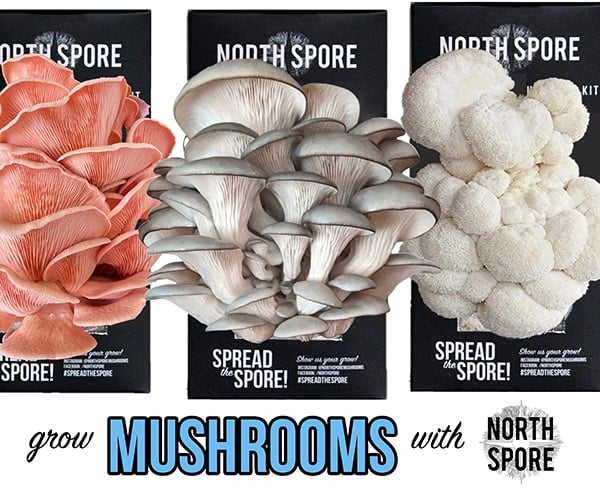


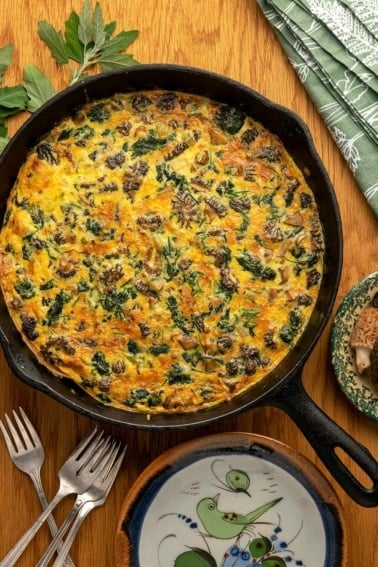
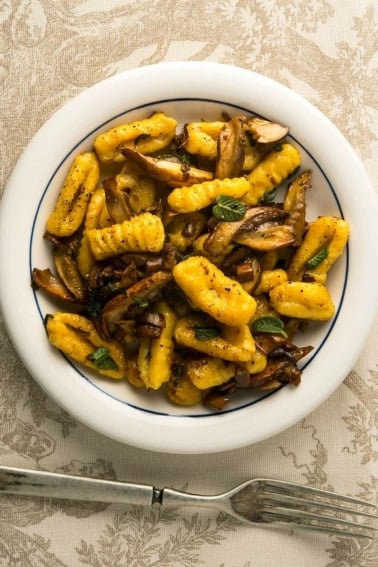


Downed logs? I need to start looking, I should have bushels of mushrooms. Maybe there’ll be a little good in the aftermath of the emerald ash borer?
I found some of these honey mushrooms in my yard. They are delicious in stroganoff. I used venison, and after I added the mushrooms – the most beautiful gravy came out. delicious.
I have these all over my yard and my husband does a lot of hunting but he’s scared to even try these and some mushrooms around here in WV can be deceiving
I love Portabella mushrooms
I’d love to know are these in fact Honey Mushrooms
I am from Northern Europe and they are valued in my little country. Yes, have to be cooked throughout. Unless you get some that suggest to be Armillaria mellea but it’s not: could be a trouble. Otherwise it’s good 3rd category mushroom.
Thanks Hank for this informative writing. I have them all around me here in Nigeria, not really sure if they are honey, but I will give them a close observation from now on
Hi Hank! Good stuff. I pick pidpenky every fall in Southern Ontario. Strong Ukrainian background. These guys get cleaned, double washed and slow boiled for a minimum of 90 minutes. With the initial boil there will be a scummy foam which should be eliminated. This boil will turn the yellow mushrooms to a dark grey color. They will however maintain their woody crunch. After cooking they are drained and rinsed under cold water. Sautee onion and garlic in a half butter oil combo, add mushrooms, season with salt and cracked pepper and sour cream. Don’t forget sto hram. (Ukrainian for 100ml-3oz of vodka for digestion and to make damn sure you don’t get sick.)
The gills on honeys do NOT always run down the stems, though they are attached. On some you can see lines that extend maybe a quarter of an inch down the stalk, as if they are trying to be gills but didn’t quite make it. But on others, the gills stop at the stem. I’ve found this discrepancy within the same batch of honeys. That’s the problem with IDing – mushrooms are such individualists! They break their own rules all the time.
All my 75 years I can only remember Mom and myself now boiling them 2 times or tell no more foam or scum is on the water. change it once at least then cook them up in butter and onions or how you like any mushroom. tasty and a bit good chewy
Honey mushrooms–love them! The harvest has been very good this year and we’ve just put in our winter stores of them. In my neck of the woods in Northwestern central Canada the ethnic name (Polish? Ukranian?) seems to be pidpenky. Also known simply as stump mushrooms. Definitely a mushroom you need to identify well. Once you know it, though, you see them everywhere when in season.
Sounds delicious: Perogies meet pidpenkies.
Love the pictures and descriptions of the Honey Mushrooms. Very informative and exactly what I was searching for.
These pierogas look delicious. They look like goyza dumplings. Maybe I could put the armillaria mushrooms in dumpling wrappers?
Pierogis typically have a much thicker dough (pretty sure there’s egg in the dough)…but gyoza wrappers work in a pinch.
Ukrainians love these delightful“pidpen’ky” (literally “from under stumps”)! Thank you for your article. Come to my house, I’ll. show you how I do them! Our Christmas Eve dinner of twelve meatless dishes would be missing one of the favourite ingredients without pidpen’ky! Diakuju!!!
Diakuju Ukrainians for “pidpen’ky” (under the stumps) ! FYI Ukrainians have loved and eaten these lovely morsels since time began…
Mushrooms always catch my eye, too, but remind me how much braver our ancestors were in taking the risk to eat them.
Your writing is beautiful, Hank, and your pierogi dough is so thin and delicate.
Great article. Well said in all regards.
Hank, question for you- when you talk about keying out a mushroom,you mention Arora’s book. Can I get the full title and author of that book from you? Or is there another that you’d suggest that also uses the if, then statements? I’m looking for a good reference guide for this.
Lesl: You bet. Mushrooms Demystified, by David Arora.
Hank – I just identified that several hundred of these
“popped” in my yard. So am really excited about making some fresh pierogi with them. I was wondering if you ever tried drying them and if so did you get the same “okra” effect with the rehydrated ones?
A friend of mine said they were delicious cooked. But when he ate them raw the next day he became very sick to his stomach, both with diarrhea and vomiting. So could it be they are ok cooked, but not raw?
Jean: 99% of all mushrooms MUST be eaten cooked. I don’t know why someone would eat raw mushrooms, honestly. And you’ll note in this article it says to cook them thoroughly.
Does the ring form a yellowish edge
dbeeman, honey mushrooms with a ring are fine. In fact, it’s a distinguishing charateristic I look for.
Ive read about these honey mushrooms on multiple sites. Most say that honey mushrooms with a ring on the stem are deadly poisonous. The ringless honey mushroom is suppose to be edible though. Any info?
FYI, as a general rule, to avoid stomach problems (for some people) honey mushrooms (armillarias) should be boiled first, the water thrown out, and then prepared whichever you wish….
(of course not if you are going to dry them)
I noticed about thirty clusters of these beautiful honey mushrooms right outside my backdoor a few days ago. I of course went through and painstakingly identified them and went to harvesting them. I took about 10-15 large caps, cleaned and cut them up with some wild onions. Seasoned with peper and garlic and sauteed them in olive oil. Then I added them to a stew I had going of chicken, celery and cream of mushroom soup. OMG! Served over Jasmine rice! Exquisite! Very good comfort food! Definitely my new fave mushrooms!